Bath water tank: types and installation options
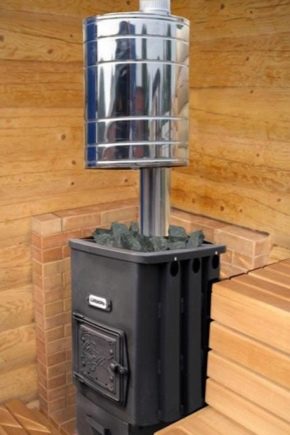
Bath procedures have a very positive effect on human health. They perfectly warm up muscles, joints, prevent colds, and improve blood circulation. But for a comfortable and healthy rest, the bath must be properly equipped.
Usually in the standard model of a Russian bath there are two water tanks. One of them is intended for cold, and the other, respectively, for hot. Comfortable rest in the bath directly depends on which hot water tank is chosen, how it is installed and how much it has. These issues should be treated carefully and with utmost responsibility.
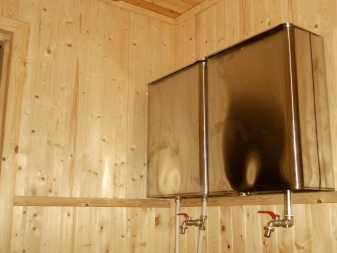
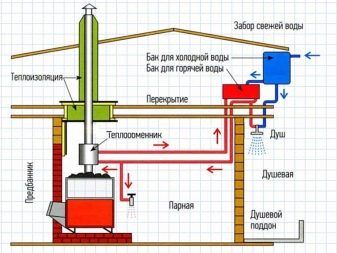
Peculiarities
Although today there are various heating devices for water, an ordinary hot water tank in a bath is still relevant. A rather significant advantage of this device is a decent saving on heating water from gas or from electrical appliances. Also one of the positive aspects of a hot water tank in a steam room is that it increases the level of humidity in the air.
The main thing before buying a tank is not to miscalculate its volume. Some important rules will help you to choose the right tank for its subsequent reliable and long-term operation. In particular, it should be borne in mind that for one person in the bath, you will need from 20 to 25 liters of hot water. Therefore, if the steam room of the bath is small and designed for two people, then a standard fifty-liter capacity will be enough. And in the case when the area of the bath allows you to relax in it with a whole company, then there is already an irreplaceable one-liter reservoir.
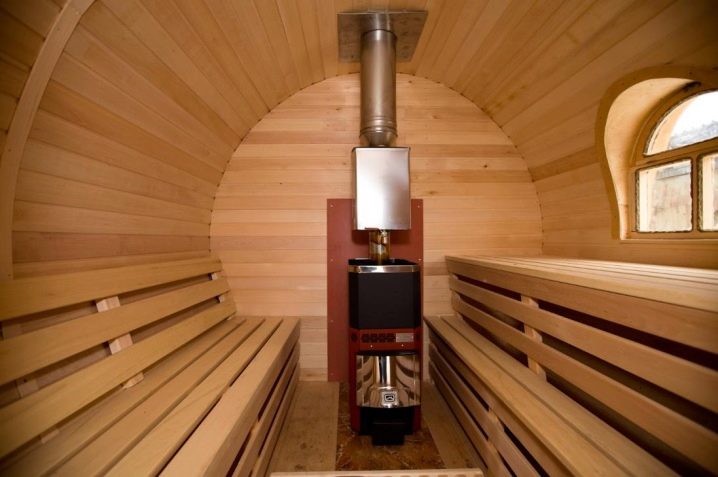
Views
Hot water tanks are available in various models. Among the most common types of structures, there are built-in tank, remote control and tank on a pipe. Each of the presented models has both its positive and negative sides.
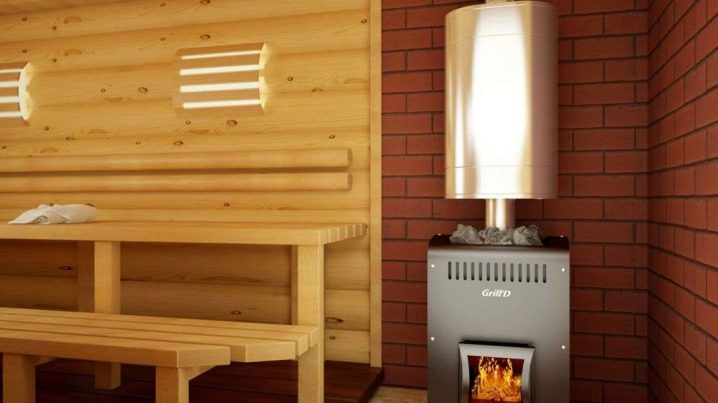
Built in
Previously, built-in structures were made in baths immediately during their construction. The lower part of the water tank was connected to the firebox, and then the liquid was heated from the fire in the stove. This is a familiar and standard design that has been used for a long time. Its big plus is that the water in the tank heats up quite quickly and it does not have much trouble with the option of heating water. Liquid from such a reservoir is taken using a ladle, lifting the lid or installing a tap in the barrel. However, such a reservoir may be small in capacity. The volume in this case directly depends on the dimensions of the heater or boiler. And also most of the heat from the stove goes precisely to heating the container with liquid, which reduces the level of heat transfer in the steam room.
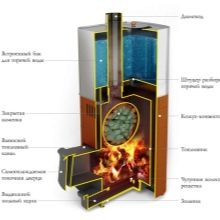
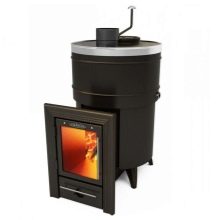
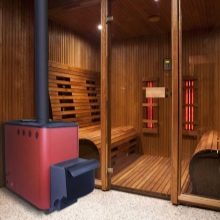
Remote
The main convenience of this type of design is that the tank can be installed anywhere, depending on the convenience. Such a container is placed most often in a washing room or in a shower near the steam room. As a heating device, a heat exchanger located in the oven is used here, which is connected to the tank using copper and brass pipes. The principle of operation is that cold water flows through the heat exchanger, and hot water rises back.
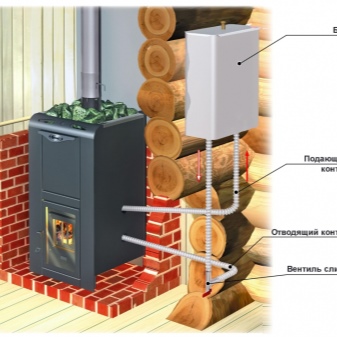
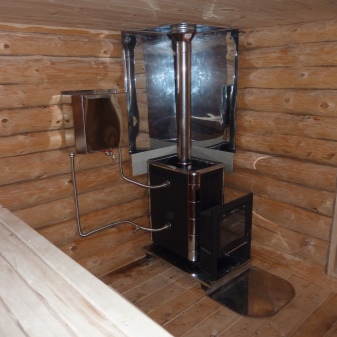
On the pipe
These models are advisable to use when the steam room is used for a long time. In this case, the container with water is above the pipe.Installation of such a structure is more difficult than the others, but it has more advantages. The water tank is usually installed in the attic. The heated water retains its high temperature for a long time even after the furnace is stopped. The design itself does not clutter up the space in the bath, as it is located in the attic. This design is good to use in a bath with a large number of people., because the tank holds a large volume of water, and it is warmed up in an extremely short time.
Another hot water tank on the pipe is called samovar because of its principle of operation. Usually stainless steel is used for the production of samovar systems. Thanks to this material, the water in the container heats up very quickly. But it is extremely important not to allow the liquid in the tank to boil. This rule applies to all types of systems.

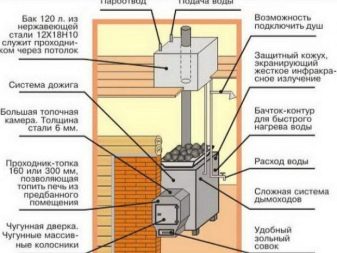
Also a rather popular model are hinged-type tanks. This is a very convenient design that is installed directly above the stove, which allows you to heat the water. Such a tank is very convenient to use in a small bath, since the water container takes up little space. But their most typical drawback is that people in the steam room can accidentally touch the hot sides of the tank and get serious burns. In addition, the volume of such tanks is not always large and the water in them can quickly boil. To do this, it is recommended to periodically drain the water and fill it with cold water. Moreover, such tanks are equipped with taps for draining water.
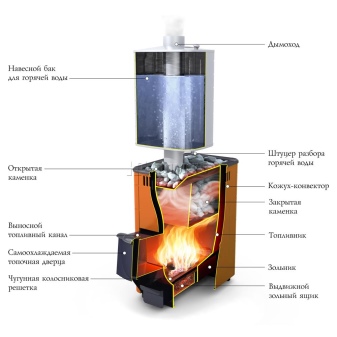

The corner water tank is installed in the corner of the steam room. This is a plus, since such a design does not clutter up the space in the bath.
Horizontal water tanks have an oval shape and more like a barrel.
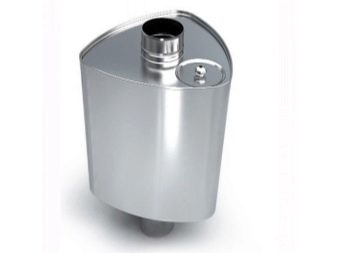
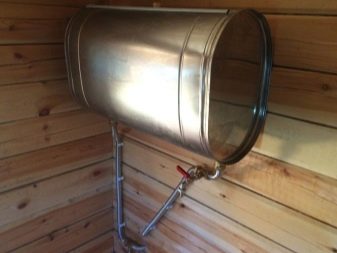
There are also tanks with the so-called heating element. Heating elements are heating elements that provide water heating from electricity. Heating elements have also gained particular popularity lately. Even many sauna stoves now work not with wood, but with the help of these devices. Their leading manufacturers are companies "Harvia", "Helo", and among domestic manufacturers, the campaign is popular "Ermak"... In addition, there are complex devices in which water can be heated both from the mains and from the heat of the stove.
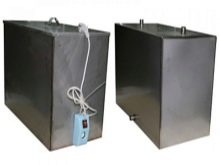


It is also worth mentioning such a model as expansion tanks. The main function of such a device is to compensate for excess pressure in the heating system. This always happens when the water temperature rises. That is, the point is that such a storage tank helps maintain optimal pressure in the system. Often expansion tanks are used for large heating systems, for example, for public baths.
An attached hot water tank is also considered one of the most popular. To heat the water, the reservoir is simply attached to the partition of the oven, and the water in it is heated.
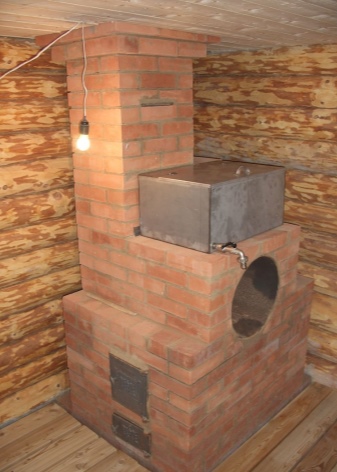
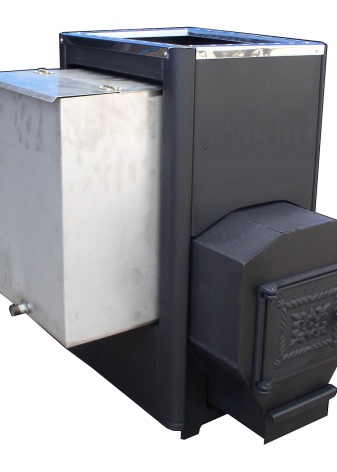
Materials (edit)
When choosing a tank for a bath or when making it on its own, it is extremely important to choose the correct material for its manufacture. The time of heating the liquid, the period of its cooling and the duration of operation of the apparatus itself will depend on this. Among the most widely used materials, cast iron, stainless steel and enamelled steel are widely used.
Previously, only cast iron tanks were used for hot water tanks. Cast iron containers time-tested and have a number of positive aspects. In particular, a cast iron tank will keep the water hot for a long time. They do not corrode and the water in this tank will always be clean. Such material is very resistant to temperature changes. And finally, the shelf life of the cast iron tank is very long, since this material is not susceptible to corrosion. Currently, not many manufacturers are engaged in the manufacture of cast iron tanks. But it is quite possible to buy a used tank at a lower price.In this case, it will be necessary to process it and give it a pleasant appearance.

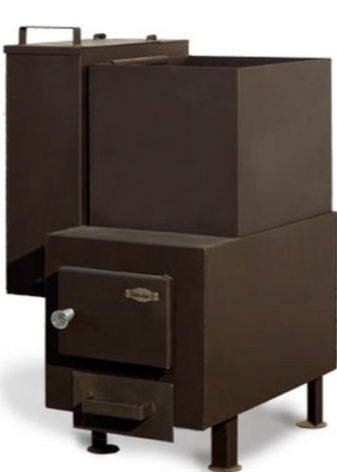
Of the minuses, you can emphasize the rather long time for heating the water in the tank. Cast iron tanks are heavy and sometimes need to be installed on a special foundation. If the tank is located above the stove, additional reinforcement is required for its fastening. Making such a tank yourself will also be a very problematic event.
Stainless steel containers are now used quite often. This material has replaced cast iron tanks. The bath owners appreciated their high positive qualities. Such tanks do not require additional protection against high humidity. The water in the stainless steel tank is heated in an extremely short period of time. Stainless steel has good resistance to sudden changes in temperature and, accordingly, does not rust, which already follows from its name. Of the minuses, it can only be noted that the water in it cools down quickly.
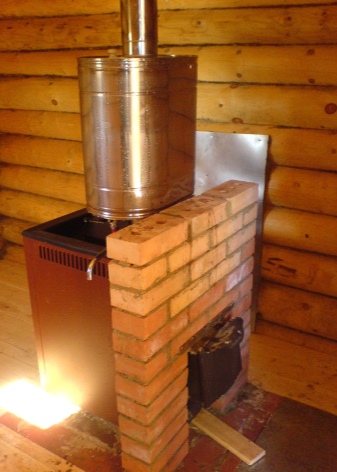

Enamelled steel tanks - also a popular version of this design. A special enamel coating on these tanks reliably protects them from corrosion. The main thing is to prevent damage to the enamel, otherwise the tank may start to rust. Although it is quite problematic to damage the enamel layer, since such a coating is resistant to all kinds of damage. If necessary, a tank made of such material can be very easy to clean. There are various colors of enamel on the market.
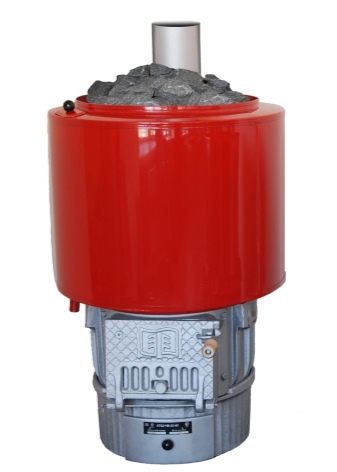
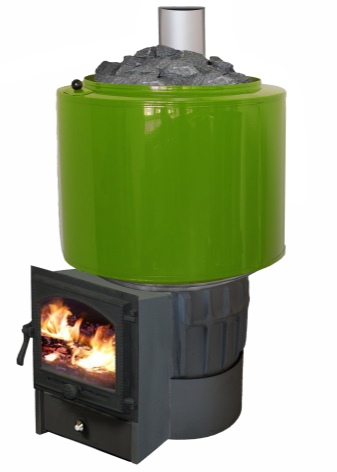
For cold water, separate tanks are now rarely used, since it most often enters the room through the water supply. But if there is a need to put a container for cold water, then with it there is much less trouble than with a tank for hot water, since there are no particularly strict requirements for it. You can even use wooden tankslike an oak barrel. Popular and plastic containers for cold water. But such containers cannot be placed in a steam room, and even more so near a stove, because plastic is sensitive to high temperatures and can deform when heated. Also, such a tank can be completely made with your own hands.
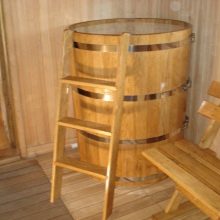

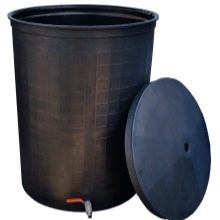
A homemade container can be welded from several sheets of aluminum. Galvanized surfaces can also be used to further protect the tank from corrosion.

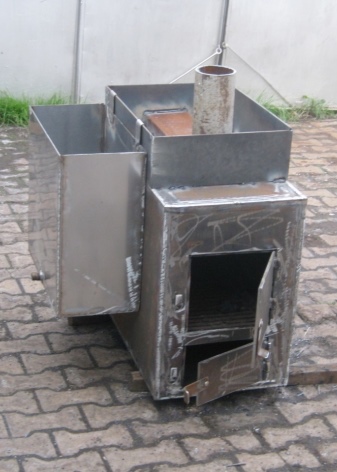
DIY making
Quite a few experienced bath attendants recommend making containers from stainless steel. Most of its advantages were listed above and they all indicate the great ease of use of such a material. But it is worth considering that stainless steel also has different brands, and not all may be suitable for making a container with water in a bath. Some of the best options are brands 08 X 17 (430) and 812 X 18H10 (304). These are very durable surfaces that require little maintenance and will last for a long time.
Usually purchased tanks have a wall thickness of 1 mm. But when making a container, it is best to use metal sheets of a slightly thicker thickness. The dimensions of the sheets are selected according to the capacity of the tank.
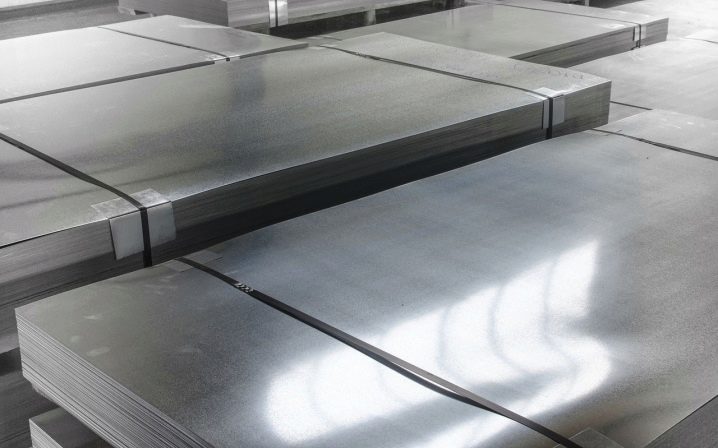
Craftsmen often use a stainless steel pipe. In this case, the container is like a barrel. And this is a rather convenient option, because you do not have to spend a lot of time calculating the size and connecting the sheets. To make such an iron barrel, you must complete the following steps:
- First you need to cut off the required piece of pipe with a grinder.
- The cutting points of the pipe must be carefully processed. You can use a regular file for this. A drill with special attachments will help to facilitate the task and save a lot of time.
- Then you need to start installing the bottom and top cover of the container. Actually, for this you need to find a sheet of stainless steel. Typically, the top and bottom are thicker than the walls of the tank itself. Draw an even circle on the sheet in accordance with the pipe diameter.The required circles are cut out and processed again. If a chimney passes through the container, then additional holes are made in the lower and upper parts in accordance with the diameter of the pipe from the stove.



- The next stage of work is the connection of the cut parts with the main part of the future container. For this, a welding machine or a soldering method is used (which is much more complicated and time-consuming). After joining, again, weld seams need to be well processed. By the way, if necessary, and for convenience, it is not at all necessary to weld the upper part. It can be bolted to the body or made as a cover so that it can be removed. This is done when the container is not connected to the water supply and the water is filled in manually.
- The next stage of work is the most painstaking. It is necessary to install a tap and branch pipes on the container. To do this, the stainless steel must be drilled from the bottom and top in the places where the taps will be located. Sometimes the pipes are simply welded to the container so as not to make special threads.
- Then work is done to install the container. More details about them are described below.


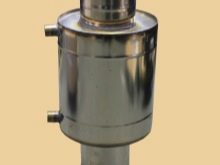
How to install and connect correctly?
In the process of installing and connecting the tank in the bath, one of the main priorities is to resolve the issue of how the water in the tank will be heated. The water in the tank can be heated either from the heat of the stove in the steam room, or with the help of a heating element. The main factor here is the number of people visiting the steam room and their need for hot water. The thickness of the tank will also affect the rate of heating of the water.

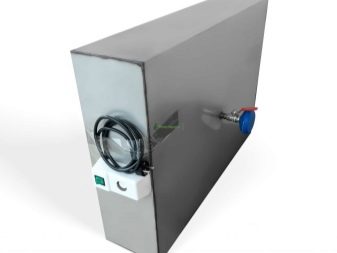
Water tank connection diagrams may vary. If there is a water supply in the room, it is necessary to use a closed-type water supply system. For this purpose, it is most advisable to use a stove that has a coil, and which, in turn, will be connected to a water reservoir and heat the liquid. The container itself can be equipped on the wall. Sometimes the tanks are mounted directly above the ovens, but for this installation it is best to use lighter and smaller structures. For containers that have a water circuit, stainless steel or galvanized sheet is often used.


You need to connect according to the following instructions:
- The tank itself should be installed in the steam room and connected to the pipes using a coil.
- To achieve good circulation, it is worth connecting the upper part of the tank to the upper outlet of the coil, and the lower part of the tank, respectively, to the lower one. For this reason, cold water will flow from below, and hot water will be discharged from above.

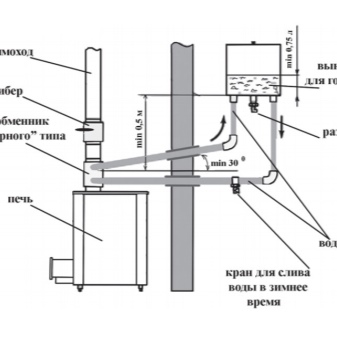
- At the place where cold water will enter the tank, a safety and non-return valve is used.
- After that, you need to set the threshold pressure for the valves at which they will be triggered. The drawings are presented below.
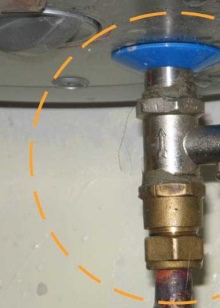
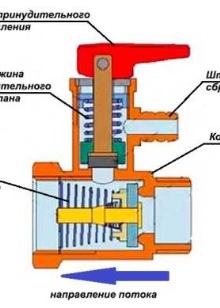
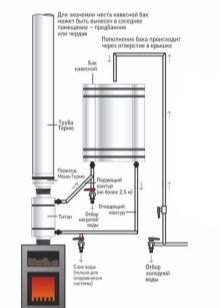
Due to this principle of operation, the liquid in the container will be heated using a coil. And after it is used up, the tank will be filled with cold water again.
If hot water stays in the tank for a long time, then the pressure rises in it. But in this case, a so-called "explosive" is installed on the tanks, which automatically releases the pressure.
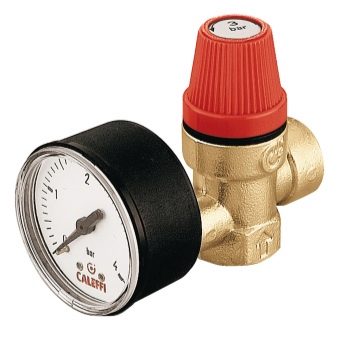
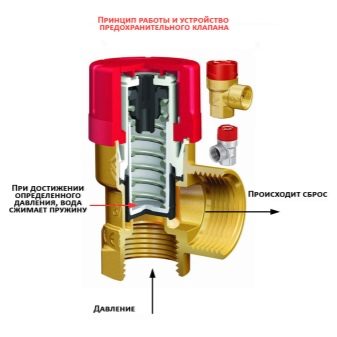
Helpful hints
Many bathhouse owners need to paint a water tank. Moreover, if this is a hand-made product, then you definitely need to give it a beautiful and presentable look. To begin with, it is recommended to thoroughly clean the surface of the container, both inside and outside, before painting. For this, you can use various abrasives. Also, the surface must be degreased so that during subsequent painting, a good adhesion of the surface and paint is ensured. If an old container is used, then most likely there will be rust residues in it.This can be dealt with using a metal brush or an electric drill with a special attachment. A drill will save you time, effort and remove rust more thoroughly.
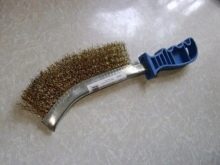

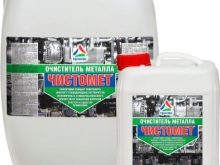
Immediately before painting, ensure that the tank surface is completely dry and primed. For painting, it is necessary to prepare a respirator and rubber gloves in advance for safety reasons. For the process itself, you can take a brush or spray.
The paint should be applied in several layers. This will protect the surface from water penetration into its structure.
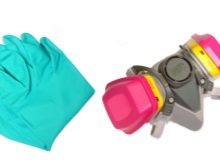
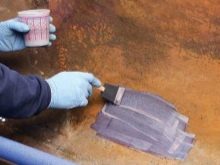

Manufacturers currently offer a wide range of different paints for all surfaces. Many paints also contain substances that help protect the container from corrosion. Therefore, painting the tank provides it with additional protection and increases its service life. Specifically for a bath, it is better to choose a paint with heat-resistant properties. These paints create a special layer on the surface of the tank, which protects it from high temperatures and the appearance of rust. Therefore, choosing paint for the tank will not be a problem and the prices for them are quite reasonable.
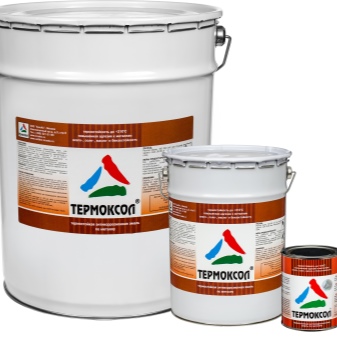
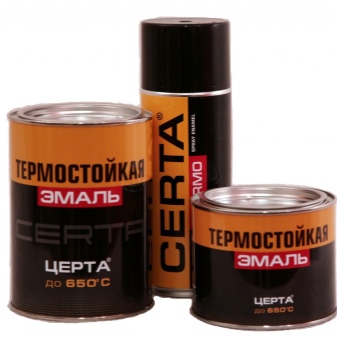
For cold water, a storage tank is often used, which pumps water inside according to the principle of a pump. When the tank is full, the pump switches off automatically. It is important to note that such structures create noise during operation. Therefore, for a comfortable stay, it is not recommended to install storage tanks in the steam room. Moreover, high humidity can harm such a system.
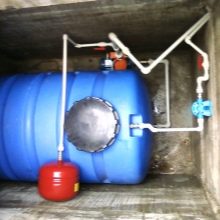
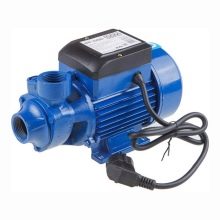
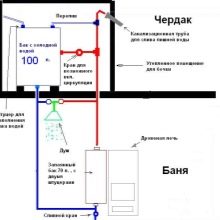
A critical factor for the tank is the correct water outlet equipment. He should pay special attention and choose pipes made of high-quality material so that they do not leak. Otherwise, the water will drain constantly and will not have time to heat up well.
It is also worthwhile to properly install the water drain from the steam room. For this, a drain pit is usually made on the street, and a drain pipe is installed in the bath. The floor in the sink is made at a slight angle so that all the water flows into the pipe.
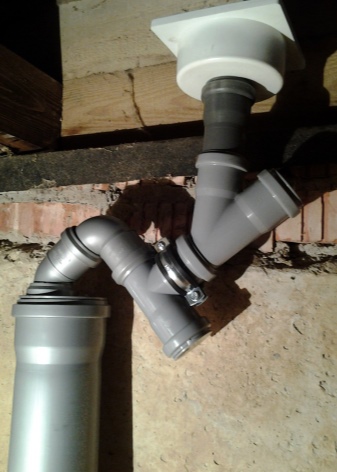
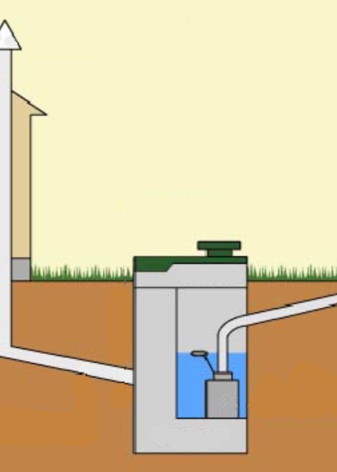
It is best to make a small partition between the oven and the metal tank. An asbestos sheet can be used. This will not damage the walls of the tank by the high temperature from the stove, thanks to this, the service life of the metal will significantly extend.
If the weight of the furnace and the tank is large, then a special foundation must first be prepared. Usually it is done when the weight of the structure exceeds 600 kg. No cement mortar is used for laying the stoves. Sand and clay are used instead. The clay is soaked in water and then sand is added to it.

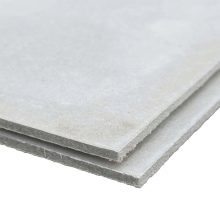
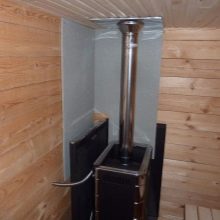
So, above were considered various models of water tanks in the bath. Each design has its own advantages and disadvantages. Therefore, the choice of design depends on the individual preferences of the owner of the bath. For the correct choice of a container with water in the bath room, you need to decide on the design and volume of the tank. They can be built-in, remote and samovar on the pipe. Among the materials, cast iron and stainless steel are popular. It is quite possible to make a container on your own without making a lot of effort and spending time and money.
For information on how to make a remote water tank, see the next video.




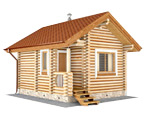
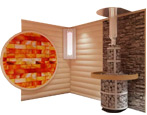
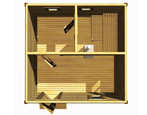
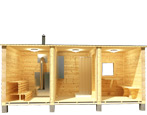




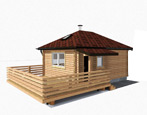
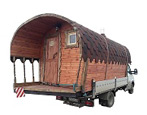


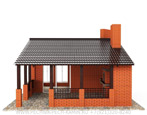

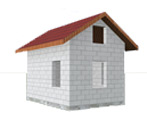

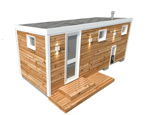

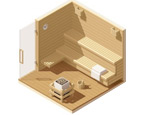
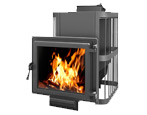
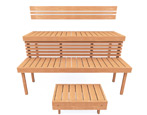
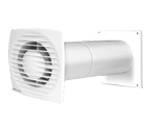




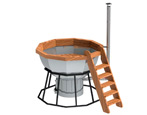

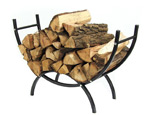

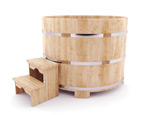
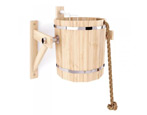
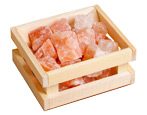


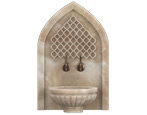

























































The comment was sent successfully.